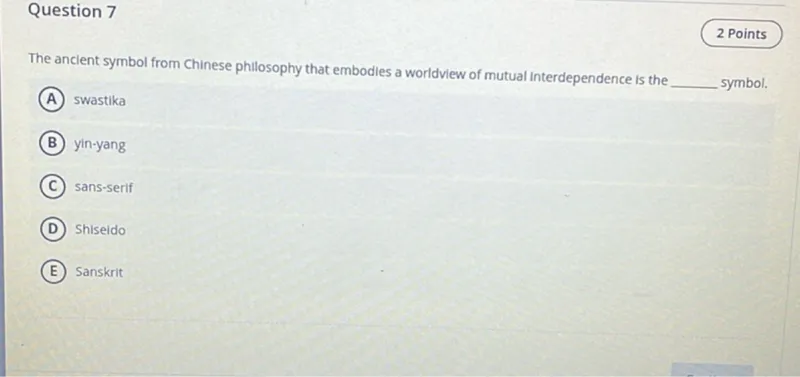The answer is (B) yin-yang
The swastika is an ancient symbol used in various cultures, including Hinduism, Buddhism, and Jainism, often representing good fortune and well-being. However, it does not specifically embody the concept of mutual interdependence in Chinese philosophy.
The yin-yang symbol is a fundamental concept in Chinese philosophy, particularly in Taoism. It represents the idea of dualism, where opposite forces are interconnected and interdependent in the natural world, creating a harmonious balance. This symbol perfectly embodies the worldview of mutual interdependence.
Sans-serif refers to a style of typeface that does not have the small projecting features called "serifs" at the end of strokes. It is unrelated to Chinese philosophy or the concept of mutual interdependence.
Shiseido is a Japanese multinational personal care company, primarily known for its cosmetics and skincare products. It has no connection to Chinese philosophical symbols.
Sanskrit is an ancient Indo-European language of India, in which many Hindu scriptures and classical Indian epic poems are written. It is not a symbol and does not relate to the concept of mutual interdependence in Chinese philosophy.






